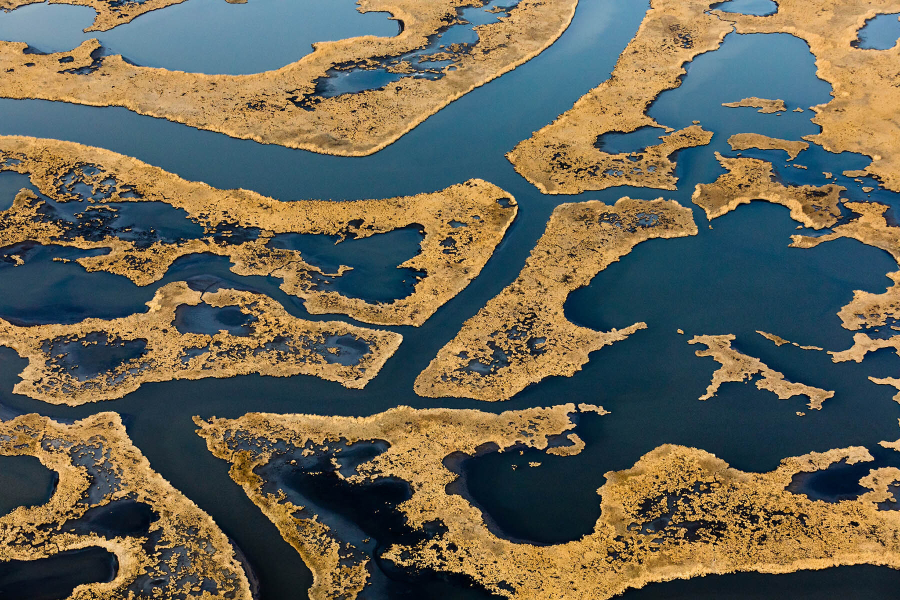Changing landscapes at Blackwater National Wildlife Refuge
Land subsidence and sea level rise threaten refuge's tidal wetlands

Blackwater National Wildlife Refuge in Dorchester County, Maryland, is seen from above on March 20, 2017. Established as a sanctuary for migrating birds, the refuge spans more than 28,000 acres along the Chesapeake Bay's Eastern Shore. Nearly one-third of Maryland's tidal wetlands—critical habitat for birds traveling along the Atlantic Flyway migration route—are encompassed in Blackwater's boundaries.
Since the mid-20th century, however, close to 8,000 acres of Blackwater's wetlands have been lost. Each year, erosion, land subsidence and rising sea levels have claimed more than 150 acres of marsh. As areas are flooded with saltwater, sensitive marsh plants are unable to survive. Tidal marshes have begun migrating to higher ground, creating new wetland areas, but the gain of less than 3,000 acres since the 1930s has not been enough to offset the losses.
According to recent projections, the changing landscape shows no signs of slowing. The Maryland Commission on Climate Change has documented sea levels rising more than one foot in the last century, and they predict a rise of 3.7 feet by the end of this century. A 2013 assessment by The Conservation Fund and Audubon Maryland-DC found that, with a three-foot rise in sea levels, virtually all of Blackwater's tidal marshes would be underwater.
Refuge managers are working to curtail the effects of a sinking refuge though a variety of projects, including a "thin layer spraying project"—pumping mud from the bottom of the Blackwater River and spraying it in a thin layer to raise the wetland's elevation. Managers hope the work will not only protect existing habitat, but also support the marsh's natural ability to rebuild itself.
Learn about the Chesapeake Bay Program's work to bolster climate resiliency in the Chesapeake Bay region.

Comments
Good to know there is a possible solution. Good luck and keep us updated!
Thank you!
Your comment has been received. Before it can be published, the comment will be reviewed by our team to ensure it adheres with our rules of engagement.
Back to recent stories